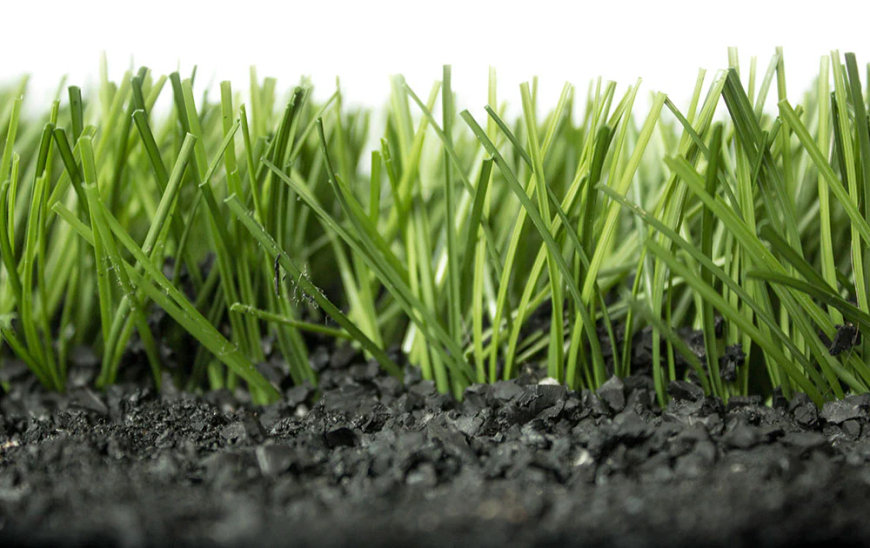Europe Scraps Artificial Turf: Authorities Remove Crumb Rubber Amid Cancer and Microplastic Fears
European authorities are removing artificial turf fields made with crumb rubber due to cancer and microplastic concerns, opting for safer alternatives by 2031.

In a sweeping move driven by rising health and environmental concerns, European authorities have begun removing artificial turf fields made with crumb rubber infill. This decision follows mounting evidence that uses recycled tire granules may pose carcinogenic risks and release microplastics into the environment.
Key actions include the Netherlands' decision to phase out synthetic sports pitches by 2030 and the EU’s binding ban on microplastic infills by 2031. The decisions reflect a broader shift prioritizing long-term public health over short-term convenience.
What Are Authorities Doing—and Why?
Recent reports, including one by The Times of India, have highlighted how several European nations are proactively dismantling artificial grass pitches, particularly those with crumb rubber derived from old vehicle tires. This granular infill is under scrutiny for containing volatile organic compounds (VOCs), polycyclic aromatic hydrocarbons (PAHs), heavy metals, and synthetic fibers—all known or suspected carcinogens The 42+14Wikipedia+14The Times+14Fidra+1The 42+1The Times of India.
In the Netherlands, a large-scale study involving 60 football clubs revealed that 58 fields had contaminant levels 1.5 to 3.7 times higher than permissible in consumer products. The government has responded by committing to completely phase out artificial turf by 2030 Ministry of Sport+1News.com.au+1.
Meanwhile, the European Chemicals Agency (ECHA) and the European Commission have enacted a ban on microplastic infill materials, including crumb rubber, due to persistent pollution concerns. However, the turf systems themselves are not banned—as clarified by industry experts—but the infill is Santa Monica ObserverPitchcare.
Health Risks: What the Science Says
There are two broad concerns: direct health hazards to users and environmental impact.
Direct Exposure
Studies have detected chemicals in crumb rubber—like PAHs, lead, and PFAS—that can be absorbed via skin contact, inhalation, or ingestion. The European risk assessment found that the overall cancer risk was low, but recommended caution and further study The Times+7The 42+7Wikipedia+7.
Child safety advocates highlight additional vulnerabilities. For example, PFAS chemicals used in turf fibers have been linked to immune system and developmental harm Santa Monica Observer+2Wikipedia+2The Times of India+2.
Environmental Contamination
Crumb rubber is a major source of microplastics. The UK’s Department for Environment, Food and Rural Affairs (DEFRA) estimated that synthetic pitches emit approximately 16,866 tonnes of microplastics annually The Times+2Fidra+2News.com.au+2. These run off into waterways and eventually reach oceans. PFAS and microplastic combination can also have amplified toxicity to wildlife ResearchGate+7Fidra+7ScienceDirect+7.
Europe’s Regulatory Landscape
Dutch Phase-Out
In October 2023, the Netherlands announced the plan to eliminate crumb rubber fields by 2030. Authorities cited both carcinogenic and ecological threats when planning the switch Ministry of Sport+1The Times+1.
EU Ban on Microplastic Infills
Under REACH regulations, the EU will ban microplastic-containing infills starting in October 2031, requiring turf manufacturers to adopt safer alternatives News.com.au+11ResearchGate+11Pitchcare+11.
Ongoing Debate in Other Countries
Scotland and other parts of the UK have called for precautionary bans. Reports from The Times urged the removal of 3G pitches due to chemical and microplastic exposure The Times. DEFRA commissioned studies that underscored microplastic pollution concerns, prompting pressure to align with EU standards Fidra.
Alternatives and Transition Strategies
Replacing crumb rubber requires affordable, efficient substitutes. The European Synthetic Turf Council supports alternatives like cork, sand, olive stone, and non-infill designs OSPAR Commission+2Pitchcare+2The Times+2. In Australia, Moore Park’s switch from crumb rubber to cork infill reflects global trends, and costed over AUD 1.5 million Santa Monica Observer+4News.com.au+4The Times+4.
Such alternatives avoid microplastics and PAHs while maintaining reliable play surfaces.
The Bigger Picture: Health vs Utility
Artificial turf became popular due to low upkeep and resilience. However, public health experts argue that no level of carcinogenic exposure is truly safe. They recommend basic hygiene—hand washing, showering post-play—as interim precautions Wikipedia+12The 42+12The Times of India+12.
Environmental advocates emphasize that the focus must shift from short-term convenience to long-term ecosystem integrity. Once microplastics enter waterways, they accumulate and resist degradation FidraFidra.
What This Means for Sports Communities
-
Player Safety: Especially critical for youth football and school sports, where children have prolonged turf exposure.
-
Local Authorities: Need phased timelines, funding, and guidance for turf replacement.
-
Manufacturers: Must innovate and pivot toward safer, sustainable materials before 2031.
-
Policymakers: Should coordinate health studies, regulation, and educational efforts to avoid public confusion.
Insightful analysis from entities such as the RIVM (Dutch National Institute) and ECHA underscores that regulatory decisions should observe both scientific complexity and precautionary principles Pitchcare+2The 42+2The Times+2OSPAR Commission+1The 42+1.
Industry Response
The Synthetic Turf Council confirms that existing fields remain in use post-ban, while companies are developing cork-based and sand–based infill options. Manufacturers are working with EU guidelines to ensure compliance Pitchcare.
Conclusion
Europe's decision to remove and replace artificial turf with crumb rubber marks a decisive shift toward prioritizing public health and environmental sustainability. With robust evidence of carcinogen and microplastic risks—and viable alternatives available—this movement represents a blueprint for future global action. Governments, sports authorities, schools, and suppliers are now collaborating to transition away from crumb rubber, creating a safer, greener foundation for children's games and community sports.




















































